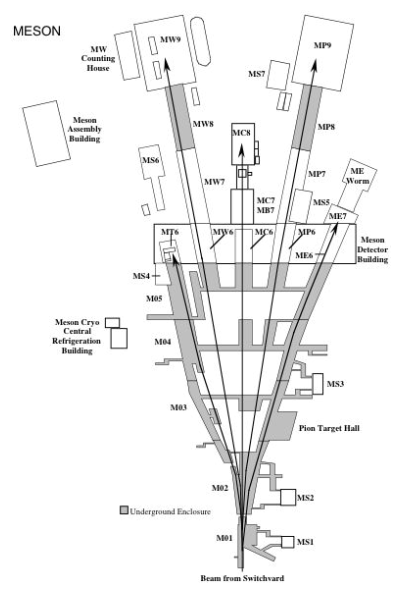Friday October 31 through Monday November 3
All shifts began in shutdown.
On Friday, Booster suffered a vacuum burst around noon. By mid afternoon, technicians completed the replacement of the Main Injector (MI) magnet that had failed. Operations received permission to send beam to MiniBooNE. Late in the afternoon, many Booster devices tripped off due to a LCW leak. An expert was here and he found and fixed a blown hose. Operators managed to get everything back on eventually. Operators on the evening shift interlocked MI and conducted a highpot. A few faults were found. Operators also interlocked sector F in the Tevatron (TeV).
On Saturday, during the midnight shift, operators cleared the MI faults. Booster experts worked at getting beam to MiniBooNE. They discovered a problem with the MP02 septa position; they accessed the tunnel and lowered the septa. After that, they quickly established bean to the MI-8 line, but problems with the MiniBooNE multiwires prevented them from verifying beam to MiniBooNE until the evening shift. Around 7 AM, operators made the MI ready for Recycler techs to access and begin their bake outs. After various repairs, Operations established beam through Booster and experts began MiniBooNE studies a bit after noon. Early on the evening shift, Recycler techs accessed MI. After the access, MiniBooNE studies resumed.
On Sunday, around 1:30 AM, MiniBooNE studies ended. At 6 AM, operators again made MI ready for an access by Recycler techs. Operators conducted a highpot and discovered a MI ground fault. They accessed and cleared the fault. A Booster expert began an aperture scan around noon. Experts had finished their Booster, MI, and MiniBooNE studies by 3 PM. Recycler techs accessed MI around 4:30 PM for vacuum work. Operators interlocked the Antiproton Source tunnels at 6 PM.
On Monday, around 6 AM, our high voltage expert reported that feeder 31 had tripped off, which serves the Meson area. Several Meson service buildings and enclosures will be powered down today for further investigation.
MESON
The Meson name is purely arbitrary and has nothing to do with the kind of experiments conducted. These enclosures contain magnets, collimators, instrumentation, experimental apparatus, and other support equipment. You can identify the enclosures and building by the following terms.
- Primary Enclosures: Most fixed target beamlines have a "target" enclosure. All enclosures up to and including this "target" enclosure are considered primary enclosures. This "target" enclosure is the dividing line between primary and secondary enclosures. A primary enclosure contains 120 GeV protons.
- Targets: Targets are made of materials such as beryllium, copper, lead, or with gasses or fluids such as hydrogen, helium, or deuterium. The design of the target depends on the needs of the experiment.
- Secondary Enclosures: A secondary area may contain a 120 GeV proton beam, but is generally a lower intensity and lower energy beam. It also may use a different particle.
- Service Buildings: Service buildings support the enclosures by housing consoles, power supplies, instrumentation control and monitoring, CAMAC, and LCW/ICW.
- Experimental Halls: Experimental Halls are located at or near the end of each beamline and often combine the enclosure, service building, experimental equipment, and sometimes the experimenter's office in one building.
Here is a drawing of the whole Meson area. So far there are several experiments planned for the up coming 120 GeV run. A few experiments will occupy the MTest line, which is on the left side, and one will be in the MCenter area.

Accelerator Update Archive
More Information
For Tevatron luminosity charts and the current status of Fermilab's
accelerators and detectors (live!), please go to Fermilab Now
Comments and Suggestions
What do you think about the Accelerator Updates? Please send comments and suggestions to: accelupdates@fnal.gov.
|